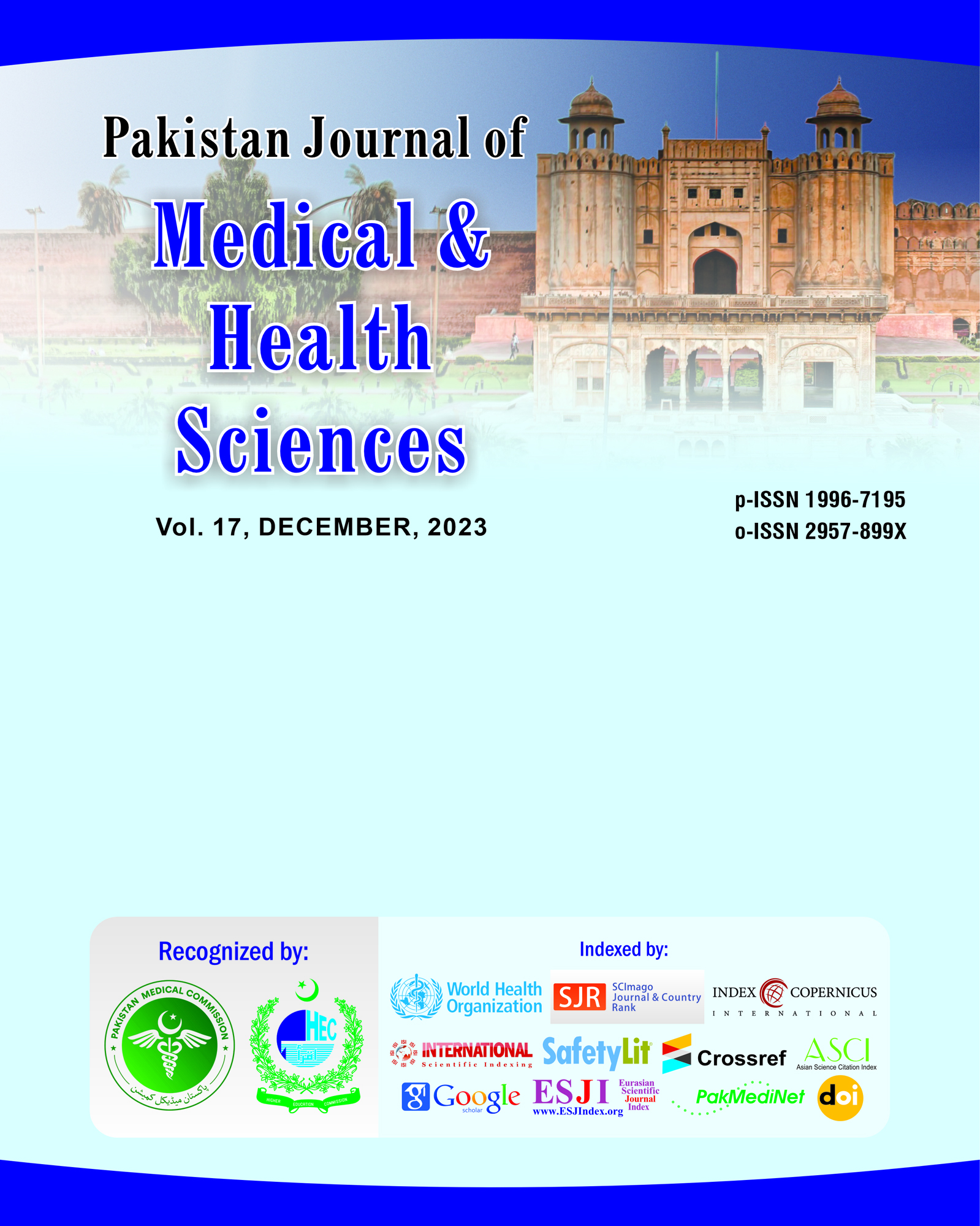Evaluation of Biochemical and Physiological Biomarkers Associated with Non-Alcoholic Fatty Liver Disease (NAFLD) among Pakistani Adults
DOI:
https://doi.org/10.53350/pjmhs020231712168Abstract
Background: In Pakistan, non-alcoholic fatty liver disease (NAFLD) is becoming more common, a trend that aligns with rising obesity rates, increased insulin resistance, and broader metabolic issues. This study aimed to investigate the biochemical and physiological indicators associated with NAFLD within a representative group of Pakistani individuals.
Methodology: This cross-sectional study was conducted from December 2022 to June 2023 in tertiary care units of Lahore, Hyderabad and Larkana. Total 120 participants were enrolled, among these, 80 individuals had NAFLD confirmed through radiological methods, while 40 served as healthy controls. Data was collected on standardized anthropometric measures, including body mass index (BMI) and waist circumference, alongside various biochemical parameters such as liver enzymes, lipid profiles, HOMA-IR scores, and levels of C-reactive protein (CRP). Statistical analyses including Student’s t-test, Pearson’s correlation, and multiple linear regression were used to identify factors that independently predicted alanine aminotransferase (ALT) levels.
Results: The findings revealed that NAFLD patients had significantly elevated values for BMI, waist circumference, ALT, AST, GGT, total cholesterol, triglycerides, HOMA-IR, and CRP compared to the control group (p < 0.001 for each parameter). In addition, there were moderate to strong positive correlations between anthropometric measurements and biochemical markers indicating liver damage. Multiple linear regression identified BMI (β = 0.78, p < 0.001), HOMA-IR (β = 2.05, p < 0.001), waist circumference (β = 0.40, p = 0.022), and CRP (β = 0.95, p = 0.005) as independent predictors of ALT levels, collectively accounting for 56% of the variance observed.
Conclusion: The study confirms that NAFLD in the Pakistani population is closely linked to metabolic abnormalities and systemic inflammation. Elevated BMI, insulin resistance, central adiposity, and increased CRP levels emerge as significant indicators of liver injury, underscoring the need for early screening and focused intervention strategies.
Keywords: Non-alcoholic fatty liver disease, NAFLD, biochemical markers, metabolic dysfunction, insulin resistance, Pakistan, inflammation, hepatic injury.
Downloads
How to Cite
Issue
Section
License
Copyright (c) 2023 Muhammad Faheem Siddiqui, Ashfaq Ahmad, Salma Kadir, Shafi Muhammad Wassan, Aiman Masood, Muhammad Yameen Mangan

This work is licensed under a Creative Commons Attribution 4.0 International License.


